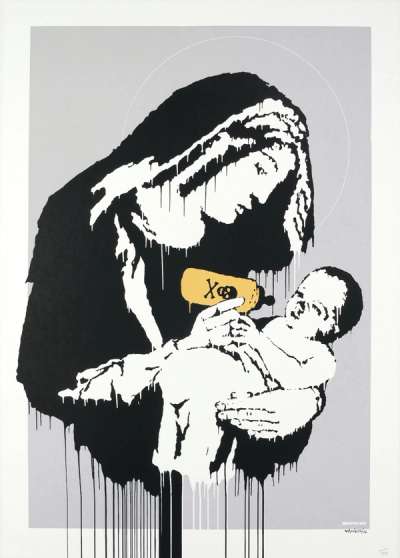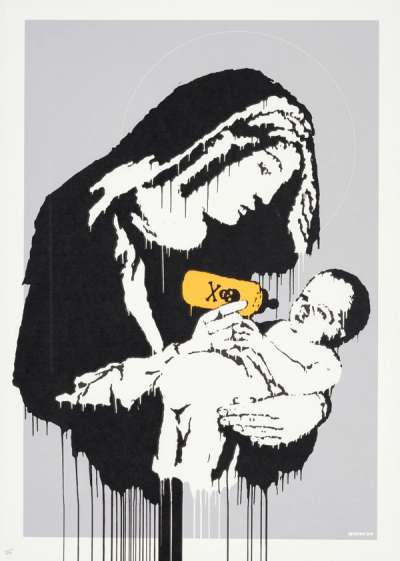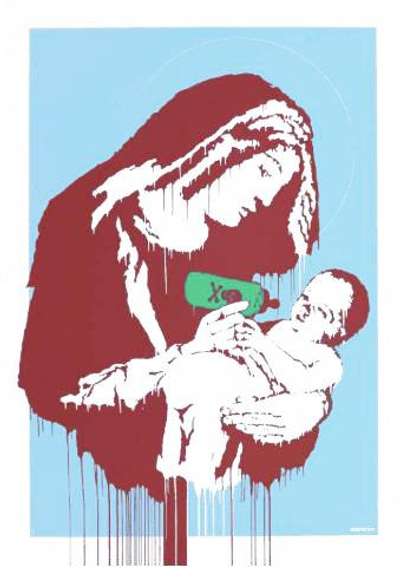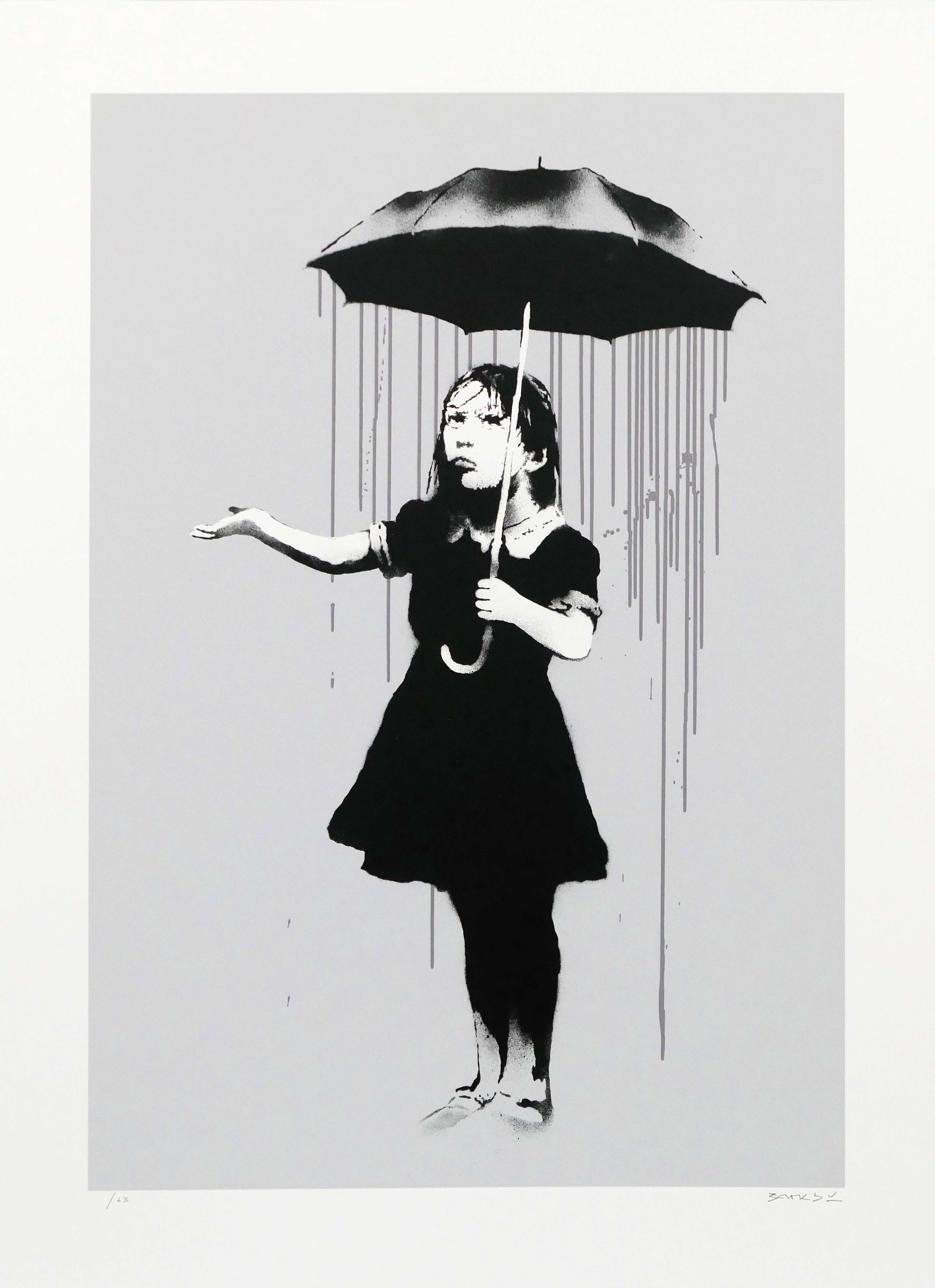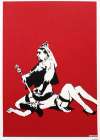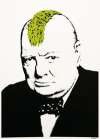Toxic
Mary
Banksy's Toxic Mary is a blasphemous take on the traditional iconography of the Madonna and Child. Produced in macabre monochromes, the bottle which Mary feeds her child is marked with skull and crossbones—an unequivocal expression of Banksy’s belief that religion is a toxic form of social control.
Banksy Toxic Mary For sale
Toxic Mary Value (5 Years)
Works from the Toxic Mary series by Banksy have a strong market value presence, with 114 auction appearances. Top performing works have achieved standout auction results, with peak hammer prices of £99750. Over the past 12 months, average values across the series have ranged from £6237 to £60000. The series shows an average annual growth rate of 10.7%.
Toxic Mary Market value
Auction Results
| Artwork | Auction Date | Auction House | Return to Seller | Hammer Price | Buyer Paid |
|---|---|---|---|---|---|
 Toxic Mary Banksy Unsigned Print | 15 Oct 2025 | Forum Auctions London | £7,650 | £9,000 | £11,500 |
 Toxic Mary Banksy Signed Print | 1 Apr 2025 | Christie's London | £22,100 | £26,000 | £35,000 |
 Toxic Mary (AP pink) Banksy Signed Print | 18 Mar 2021 | Sotheby's Online | £76,500 | £90,000 | £120,000 |
Sell Your Art
with Us
with Us
Join Our Network of Collectors. Buy, Sell and Track Demand
Meaning & Analysis
Banksy’s 2003 Toxic Mary draws from classical imagery to make fiercely anti-religious and anti-capitalist critique.
Made in the artist's characteristic stencilled style, Banksy's screenprint shows the Virgin Mary in drapery, feeding her infant son. A controversial work, which some have deemed blasphemous, it breaks firmly with established iconographical tradition: borrowing a classical motif from Renaissance paintings of the Madonna and Child, the Bristol-born Street Artist inverts convention, depicting the Virgin feeding her baby with a neon bottle, marked with the skull and crossbones - a symbol for poison.
Formally-speaking, this work diverges from Banksy’s usual style, with the clean lines afforded by the stencil swapped in for what looks like dripping paint that runs past the frame of the main image in a striking trompe l’oeil-like effect. Despite its aesthetic variance, however, the print does broach similar themes to those evoked in his later work, Christ With Shopping Bags, made in 2004. This work also incorporates religious iconography to criticise capitalism, and to denounce the perversion of Christian values during the Christmas period.
Bringing dull colours into relief by way of neon yellow paint, used to depict the 'toxic milk bottle', the print is undoubtedly one of Banksy’s darker works; evoking a sense of despair and disintegration, it eschews the usual humour employed by the artist, rather elevating a bleak societal attack to the realms of witty satire.
